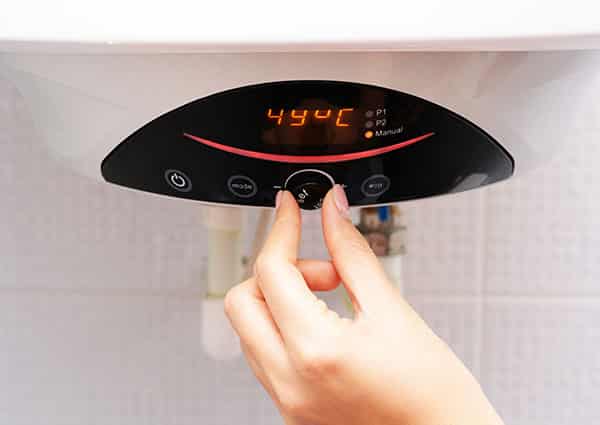not enough hot water from electric water heater
Hot Water Not Hot Enough: Common Problems and How to Fix Them

Hey y'all! Are you tired of stepping into a lukewarm shower, expecting a refreshing burst of hot water, but ending up disappointed? We feel you! Hot water plays a crucial role in our daily lives, and when it's not hot enough, it can be quite frustrating. But worry not, because we've got your back!
Identifying the Issue

Before we dive into the solutions, let's first identify the common problems that can cause your water heater to not heat up enough. By understanding the underlying issues, we'll be better equipped to troubleshoot and fix them.
1. Sediment Buildup

One of the most common causes of lukewarm water is sediment buildup in your water heater tank. Over time, minerals and debris can settle at the bottom of the tank, insulating the heating element and preventing efficient heating. This can lead to decreased hot water production and temperature.
To tackle this issue, you can flush out the sediment from your water heater. Here's how:
- Turn off the power supply to the water heater.
- Attach a hose to the drain valve at the bottom of the tank.
- Place the other end of the hose in a suitable drainage area.
- Open the drain valve and allow the tank to empty completely.
- Carefully close the drain valve and remove the hose.
- Turn the water supply back on and let the tank fill up.
- Turn on a hot water faucet in your home to allow the air to escape from the system.
- Finally, turn on the power supply and check if the water temperature has improved.
2. Faulty Heating Element

If flushing out the sediment doesn't solve the problem, it's possible that you have a faulty heating element. Water heaters typically have two heating elements, one at the top and one at the bottom. If either of these elements malfunctions, your water may not heat up properly.
To check if the heating elements are working correctly, follow these steps:
- Turn off the power supply to the water heater.
- Remove the access panels on the water heater to reveal the heating elements.
- Use a multimeter to test the continuity of each heating element.
- If the multimeter reading shows no continuity, you'll need to replace the faulty element.
- Consult a professional plumber if you're unsure or uncomfortable with replacing the heating element on your own.
3. Malfunctioning Thermostat

The thermostat in your water heater is responsible for regulating the water temperature. If it's not functioning correctly, it can lead to inadequate heating. In some cases, the thermostat may be set too low, causing the water to be lukewarm.
To troubleshoot the thermostat, follow these steps:
- First, make sure the power supply to the water heater is turned off.
- Remove the access panels and insulation to expose the thermostat.
- Use a thermometer to check the accuracy of the thermostat's temperature reading.
- If the reading doesn't match the actual water temperature, you may need to recalibrate or replace the thermostat.
- If you're unfamiliar with thermostat calibration, it's best to seek professional assistance.
4. Insufficient Insulation

Inadequate insulation around your water heater can result in heat loss, making it harder for the water to reach and maintain the desired temperature. This is particularly common in older water heaters or those located in colder areas of your home.
To improve insulation and prevent heat loss, consider these options:
- Insulate the hot water pipes connected to the heater with foam pipe insulation.
- Cover the water heater tank with an insulating blanket or jacket.
- If your water heater isn't already insulated, consider investing in a new, energy-efficient model with built-in insulation.
5. Undersized Water Heater

Lastly, if you consistently experience a lack of hot water throughout your household, it's possible that your water heater is undersized for your needs. A smaller capacity water heater may struggle to keep up with the demand, resulting in lukewarm water.
To determine if your water heater is undersized, consider the number of occupants in your home and their hot water usage habits. If you frequently run out of hot water, it may be necessary to upgrade to a larger tank or consider switching to a tankless water heater, which provides hot water on demand.
Remember, always consult a professional plumber if you're unsure about any of these troubleshooting steps or if your water heater requires complex repairs. They have the expertise to diagnose and fix the problem effectively.
We hope these tips have helped you understand the common problems that can cause your hot water to not be hot enough. By following these steps, you'll be well on your way to enjoying the rejuvenating warmth of a hot shower once again!

